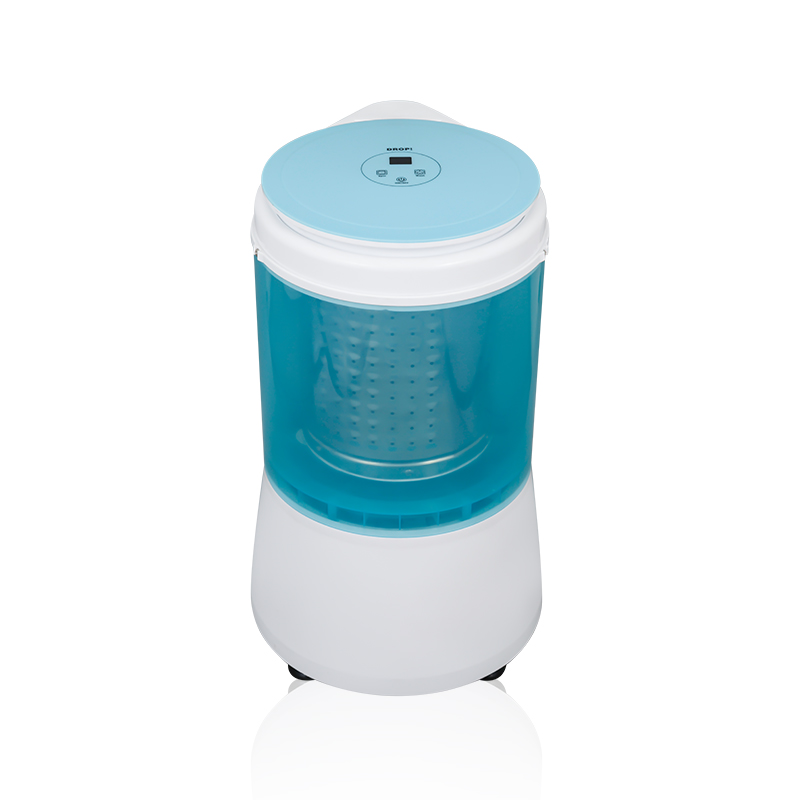No.62, Beiyihuan Road, Industry Area Zhangqi Town Cixi Ningbo China.
Phone:+86-13777243189
Living in an apartment, with limited space, noise sensitivity, and limited access to water and electricity, can make laundry a significant challenge. Countertop washing machines are a popular choice for many due to their compact size, ease of portability, and minimal water consumption.
1. Measure your space first.
Before purchasing, take out your tape measure to ensure the correct dimensions.
Measure the length, width, and height: Measure where you plan to place the washing machine, including a countertop, a kitchen corner, or a balcony cabinet.
Allow clearance for the lid: Many top-loading washing machines have top-loading designs, requiring additional height clearance to open the lid smoothly.
Consider the location of your water source: Most top-loading washing machines require a faucet connection. It's best to choose one near a kitchen or bathroom water source to avoid long hoses that interfere with aesthetics and usability.
Plan storage space: Store laundry away when not in use. Consider the height and depth of the machine, especially.
2. Determine capacity based on laundry volume.
Laundry needs vary greatly among different groups.
For singles: A 4–5 pound (approximately 1.8–2.3 kg) capacity is sufficient for washing several T-shirts and a pair of pants at a time.
For couples or families of two: A 6–8 pound capacity is recommended to reduce the frequency of laundry. Frequency: If you typically wash clothes every few days, a smaller capacity is fine; if you only wash once or twice a week, a larger capacity is recommended.
Special Needs: If you frequently wash sheets, towels, or thick coats, a larger capacity model with a high-power setting is recommended.
3. Check Power and Water Conditions
Don't overlook the compatibility of your water and electricity supply, or you might end up with a machine that doesn't work.
Voltage: Most North American apartments use a standard 110V outlet, but if your area has a different voltage, you'll need to choose a model that supports that voltage.
Water Use: Some machines require a direct connection to a tap, while others can be manually filled. If your kitchen only has a single faucet connection, it's best to check that all the necessary accessories are available.
Drainage: Typically, the drain hose drains into a sink or bucket. Make sure the hose is long enough and at an appropriate height.

4. Compare Wash Modes and Features
The more features a machine has, the more it can accommodate different fabrics and situations.
Basic Washing: Normal, Gentle, and Quick settings are generally sufficient for daily use. Advanced Features: Twin-drum (wash + dry), timer, water-saving mode, child safety lock, etc.
Noise Level: If you wash at night or your apartment has poor soundproofing, choose a low-noise model (ideally under 60 decibels).
User Interface: Mechanical knobs are simple and durable, while electronic controls are more precise but may require some adjustment.
5. Consider Material and Portability
A good machine should not only clean thoroughly but also be durable and easy to move.
Inner Drum Material: Stainless steel is more heat-resistant and corrosion-resistant than plastic, resulting in a longer lifespan.
Weight: Lightweight models are easier to move but may be less stable; heavier models are more stable but more difficult to carry.
Mobile Design: Models with handles or wheels are particularly suitable for renters or those who move frequently.
6. Set a Budget
The price of tabletop washing machines varies primarily based on capacity, features, and brand.
Entry-Level Models ($100–$150): Suitable for one person, with simple features. Mid-range models ($150–$250): Larger capacity, lower noise, and more features.
High-end models ($250+): Quiet design, stronger power, smart controls, and more.
Additional costs: Don't forget to factor in shipping fees, connector accessories, or extended warranties.
7. Review user reviews and warranty terms.
Real-world experience can help you avoid pitfalls.
Cleaning performance: Check user feedback on how well it cleans clothes and removes stains.
Durability: Look for reviews of users who have used it for more than six months; short-term success doesn't guarantee long-term reliability.
After-sales service and warranty: A one-year warranty is the minimum standard, but some brands offer two- to three-year warranties for added peace of mind.
8. Consider aesthetics and overall style.
Although it's a home appliance, it's likely to be kept in the kitchen or on the balcony for a long time.
Color options: White, silver, and black are versatile, and colorful models are suitable for personalized spaces.
Size and proportion: Too large can look obtrusive, while too small can look cheap.
Wire and pipe storage: Choose designs with hidden storage slots for a neater look.